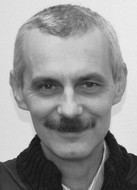Management and didactic provisions for industrial gymnastics in modern socio-economic situation
Фотографии:
ˑ:
PhD, Associate Professor K.E. Stolyar1
PhD, Associate Professor Т.N. Shutova1
S.Y. Vitko1
Dr.Hab., Professor L.B. Andryushchenko1
1Plekhanov Russian University of Economics, Moscow
Positive experience of industrial gymnastics accumulated by different public and private companies acting in the new economic situation may be applied to improve the economic process efficiency on the whole, facilitate healthy lifestyles, habitual physical practices and sport services for different population groups and, hence, attain the objectives set by the relevant programmatic and regulatory documents. To facilitate solutions and offer practical toolkits to mitigate harmful environmental conditions and improve working capacity of industrial personnel, the industrial professions were classified into four groups as provided by the V.I. Ilyinich (2000) classification, and a special set of exercises was recommended for each of the groups. Authors of the study conclude that this industrial gymnastics model implemented by different public and private companies will help improve the economic process efficiency on the whole, facilitate healthy lifestyles, habitual physical practices and sports for different population groups and, hence, attain the objectives set by the relevant national programmatic and regulatory documents.
Keywords: professional physical culture, industrial gymnastics, beginner gymnastics, active breaks, physical training minutes, active rest pauses.
References
- Aghajanyan N.A., Baevskiy R.M., Berseneva A.P. Problemy adaptatsii i uchenie o zdorovie [Adaptation problems and health theory]. Moscow: PFUR publ., 2006, 284 p.
- Ilyinich V.I. Fizicheskaya kultura studenta i zhizn. Uchebnik [Student's physical culture and life. Textbook]. Moscow: Gardariki publ., 2008, 366 p.
- Kokoulina O.P., Kopylova N.E., Efremova N.G., Zaytsev V.A. Povyshenie zainteresovannosti studentov v zanyatiyakh fizicheskoy kulturoy [Increasing interest of students in physical education]. Teoriya i praktika fiz. kultury, 2017, no. 9, pp. 22-24.
- Loginov O.N., Stolyar K.E. Zanyatiya po fizicheskoy kulture kak sredstvo obespecheniya lichnoy bezopasnosti [Physical Education classes for personal safety]. Mater. Vseros. (s mezhdunar. uchastiem) nauch.-prakt. konf. Dvigatelnaya aktivnost uchascheysya molodezhi v sovremennom obrazovatelnom prostranstve [Proc. Rus. (with international participation) res.-pract. conf. “Students’ motor activity in modern educational space”]. Yoshkar-Ola: VRSTU, 2015, pp. 128-130.
- Petrunina S.V., Rogov A.A., Denisevich A.N., Kiryukhina I.A. et al Osnovy proizvodstvennoy gimnastiki. Metod. rekom. [Basics of industrial gymnastics. Guidance]. Penza: PSU publ., 2015, 53 p.
- Rybakova E.O., Shutova T.N. Sovershenstvovanie kompetentsiy rekreatsionnoy napravlennosti v professionalnoy podgotovke bakalavrov fizicheskoy kultury [Recreational competence improvement in vocational training of bachelors of physical education]. Izvestiya Tulskogo gosudarstvennogo universiteta. Fizicheskaya kultura. Sport, 2016, no. 4, pp. 77-84.
- Sanoyan G.G. Fizicheskaya kultura v rezhime dnya trudyaschikhsya [Physical culture in working-day regime]. Moscow, 1979, 151 p.
- Stolyar K.E., Stolyar L.M. «Strategiya razvitiya FKiS» i dostizhencheskoe napravlenie sorevnovatelnoy deyatelnosti sportsmenov starshikh vozrastnykh grupp ["Strategy for development of FC & S" and direction of competitive activity of athletes from senior age groups]. Izvestiya Tulskogo gosudarstvennogo universiteta. Fizicheskaya kultura. Sport. Tula: TSU publ., 2015, no. 3, pp. 147-154.




 Журнал "THEORY AND PRACTICE
Журнал "THEORY AND PRACTICE